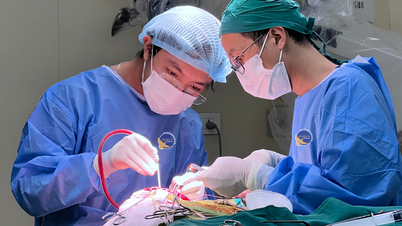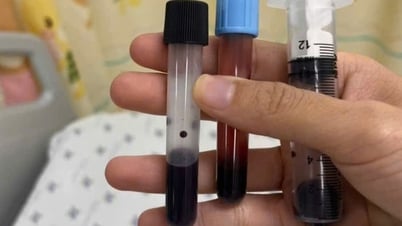The first patient in Duy Tien, Ha Nam (73 years old) slaughtered a sick pig and cooked it. After a day, the patient developed a headache, nausea, high fever and panic, and was taken to the hospital by his family. The patient was diagnosed with sepsis and multiple organ failure. Due to the severe progression, the patient was transferred to the Tropical Disease Center.
Here, the patient was given emergency care, intensive resuscitation, and high-dose antibiotics. With clinical symptoms, multiple organ failure, and cerebrospinal fluid puncture results, protein increased - 2.58g/l, gram-positive cocci in pairs, and blood culture showed Streptococcus suis.
This is a typical case of meningitis caused by Streptococcus suis after epidemiological contact with sick and dead pigs (during the slaughter of sick pigs) and eating pork containing bacteria.
The second patient, 41 years old, in Hung Yen , developed purulent meningitis caused by streptococcus suis after 9 days of eating duck blood pudding. According to the family, 9 days before being admitted to the hospital, the patient ate duck blood pudding bought at the market. One day after eating, the patient developed an unknown fever with headache and fatigue.
The patient was taken to the hospital for pain relief. When severe headaches, restlessness, and agitation appeared, the patient was taken to the Tropical Disease Center. Cerebrospinal fluid culture results revealed Streptococcus suis.
According to Associate Professor, Dr. Do Duy Cuong, Director of the Center for Tropical Diseases (Bach Mai Hospital), Streptococcus suis is a disease transmitted from pigs to humans. Most cases are related to slaughtering, eating raw blood pudding or foods made from undercooked pork...
Some restaurants now use pig's blood mixed with goose, duck, goat's blood... to sell, so when tested, the results showed Streptococcus suis bacteria after eating goose, duck... blood pudding.
In addition, there are some cases where patients do not eat blood pudding or slaughter pigs but still get sick because they can eat infected pork, but it is processed raw, or come into contact with infected pigs through skin lesions or scratches when preparing food.
People infected with Streptococcus suis include 3 forms: septicemia, purulent meningitis or a combination of both. The incubation period of Streptococcus suis in humans is from a few hours to 4 or 5 days, depending on each person's constitution.
When infected with streptococcus suis, the patient has symptoms of fever, chills, nausea, vomiting, and possibly diarrhea... These symptoms make many people mistake them for common digestive disorders and food poisoning.
In severe cases, the patient may experience tinnitus, deafness, stiff neck, lethargy, panic, necrotic rashes on the skin due to sepsis, multiple organ failure, blood clotting disorders, septic shock, and rapid death if not detected and treated promptly.
Every year, the Tropical Disease Center, Bach Mai Hospital receives and treats dozens of cases of sepsis and meningitis caused by Streptococcus suis, who are hospitalized in severe condition with a mortality rate of up to 20-30%. If the patient survives, the rate of sequelae is also very high, commonly irreversible deafness.
According to doctors, streptococcus suis bacteria can be completely destroyed when food is thoroughly cooked. Currently, there is no vaccine for this disease, so to prevent it, people should not slaughter sick or dead pigs; should wear gloves and protective equipment when in contact with rare or raw pork, and wash hands thoroughly after processing meat.
People also need to give up unhealthy eating habits such as blood pudding (including pig blood pudding and blood puddings from goats, geese, and ducks). When symptoms of the disease appear, they need to go to medical facilities immediately for timely detection and treatment./.
Source






































































































Comment (0)